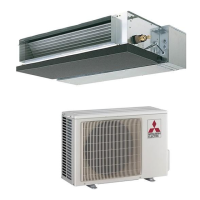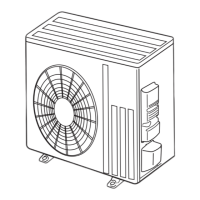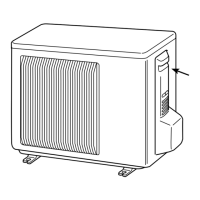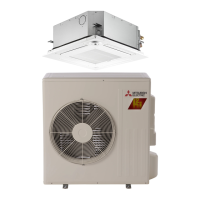
Do you have a question about the Mitsubishi Electric SUZ-KA71VA4 and is the answer not in the manual?
| Brand | Mitsubishi Electric |
|---|---|
| Model | SUZ-KA71VA4 |
| Category | Air Conditioner |
| Language | English |
Provides information on R410A refrigerant for air conditioners.
Lists and describes tools required for R410A refrigerant systems.
Details specifications for refrigerant piping, including diameter, thickness, and insulation.
Instructions for applying refrigerant oil to flare and union seat surfaces.
Guidelines for air purging using a vacuum pump for environmental protection.
Procedures for additional refrigerant charging, emphasizing liquid phase charging.
Step-by-step procedure for pumping down the air conditioner system.
Lists specifications and ratings for key electrical components.
Details additional refrigerant charge amounts based on piping length.
Explains the control logic for the outdoor fan motor operation.
Describes the control sequences for the reversing valve (R.V.) coil in cooling and heating.
Shows the relationship between various sensors and actuators in the system.
Instructions on how to change the defrost finish temperature setting.
Important safety precautions and general checks before starting troubleshooting.
A table listing symptoms, check codes, conditions, and remedies for troubleshooting.
Guide on how to use the self-diagnosis function to recall failures.
Steps for performing self-diagnosis using specific remote controllers.
Procedure to diagnose the remote controller using its built-in function.
Self-diagnosis procedure for the PAR-21MAA remote controller.
Recalling error code history during maintenance for PAR-21MAA controller.
Diagnosing the remote controller when the unit cannot be operated.
Self-diagnosis procedure for wireless remote controllers in case of trouble.
Details error codes detected by indoor and outdoor units with symptoms and remarks.
Step-by-step guide to check the inverter and compressor for issues.
Procedure to check the compressor's normal operation and continuity.
Method to measure compressor winding resistance to detect shorts or opens.
Procedure to measure the time until the inverter stops due to overcurrent.
Steps to check the resistance of outdoor unit thermistors.
Steps to check the resistance of the R.V. coil and related voltages.
Procedure to check the resistance and voltage of the outdoor fan motor.
Checks for LEV coil operation, sound, vibration, and resistance.
Steps to check the inverter P.C. board, including fuse, connectors, and LED indication.
Test point diagram and voltage checks for the inverter P.C. board.
Test point diagram and voltage checks for the inverter P.C. board.
Step-by-step instructions for removing the outdoor unit cabinet.
Procedure to remove the inverter assembly and P.C. board.
Steps to disconnect and remove the R.V. coil.
Instructions for removing various thermistors from the unit.
Procedure to remove the outdoor fan motor and its components.
Steps to remove the compressor and 4-way valve.












